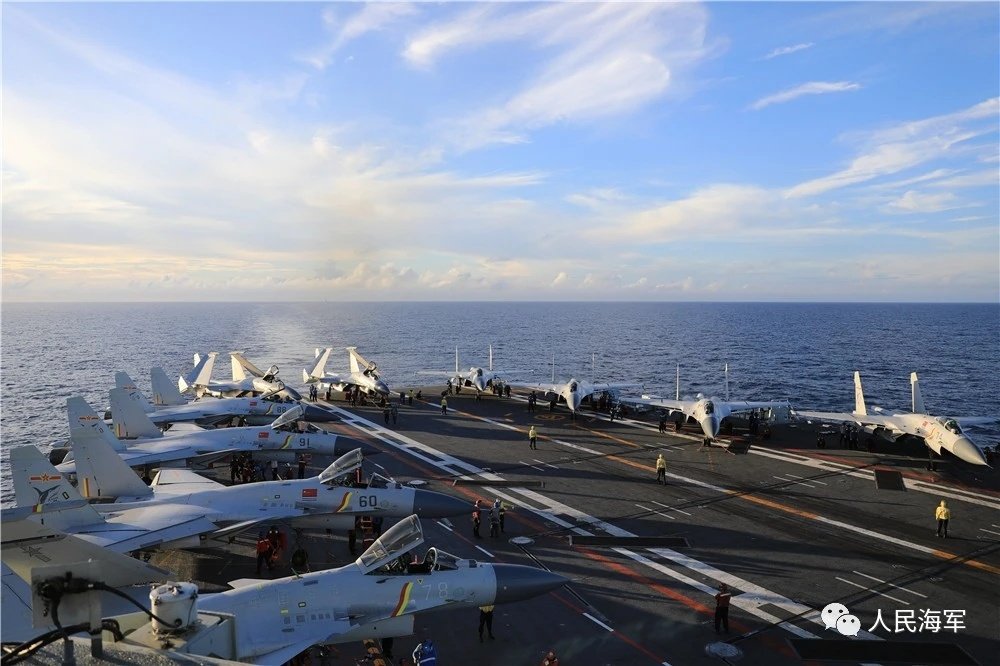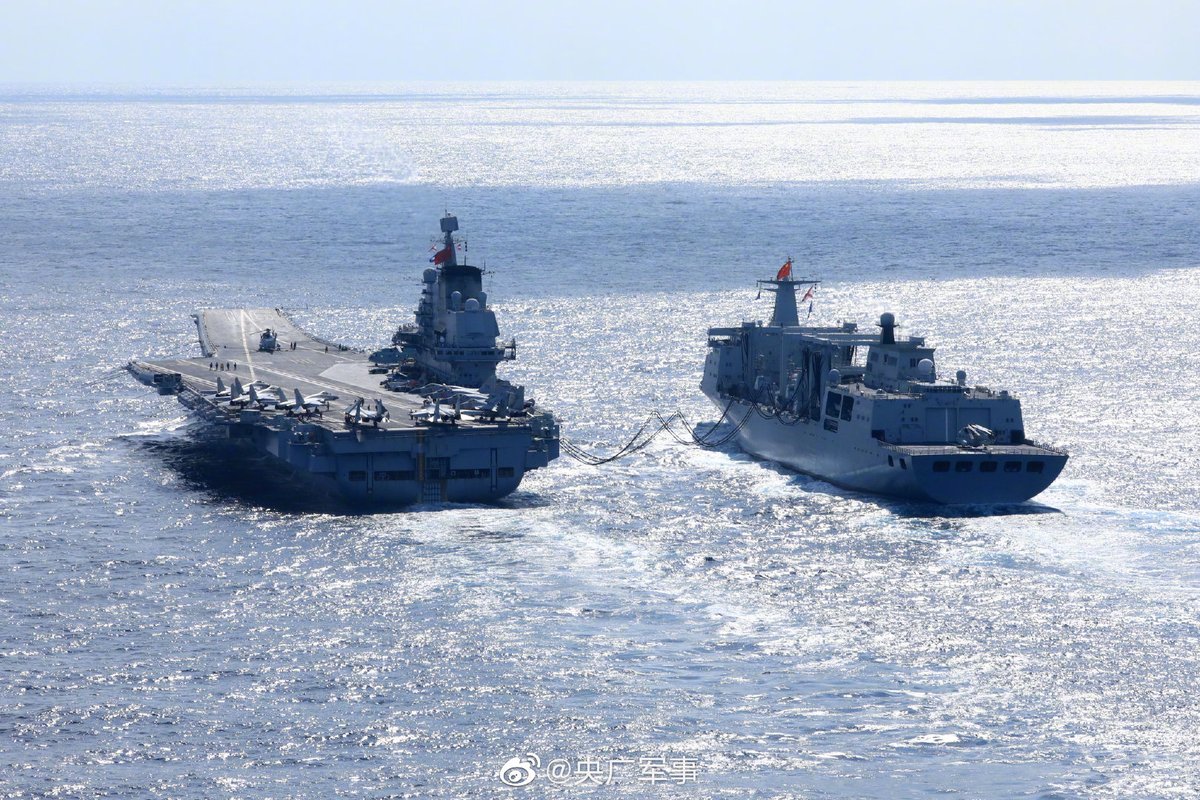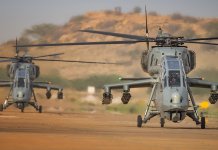An American naval expert has warned US military planners that the US Navy might lose to China’s People’s Liberation Army (PLA) Navy, which enjoys a substantial numerical advantage over the US, saying, “the side with the most ships almost always wins.”
However, the Washington DC-based Center for Strategic and International Studies (CSIS) recently simulated a Chinese invasion of Taiwan in 2026 and published its results on January 9, which suggest that a conflict over Taiwan would result in thousands of casualties among Chinese, US, Taiwanese and Japanese forces, and China would likely lose the war.
According to the results of the simulations, the US might emerge victorious in the conflict, but its military would be left in a crippled state just as much as the defeated PLA forces.
The simulation predicted that at the end of the conflict, at least two US aircraft carriers would be sunk in the Pacific, while China’s modernized People’s Liberation Army (PLA) Navy, the largest naval force in the world, would be in “shambles.”
Although, in a January issue of the US Naval Institute’s (USNI’s) Proceedings magazine, Sam Tangredi, the Leidos Chair of Future Warfare Studies at the US Naval War College and a former US Navy captain, shared an even more bleak outlook toward a future potential US-China conflict in the Pacific.
Superior Numbers Almost Always Defeat Superior Technology!
According to Tangredi, China’s numerical superiority will probably lead to defeat for the US Navy in any potential future conflict with China.
He looked at 28 naval wars in history, returning to the Greco-Persian Wars of 500 BC, and found that superior technology defeated bigger numbers in only three instances.
“Using technological advantage as an indicator of quality, historical research on 28 naval wars (or wars with significant and protracted naval combat) indicates that the side won 25 with the larger fleet,” wrote Tangredi, while noting that in cases where fleet size was roughly equal, superior strategy and substantially better trained and motivated crews carried the day.
“Only three could be said to have been won by a smaller fleet with superior technology,” according to Tangredi’s findings.
Citing the example of Napoleonic wars, Tangredi wrote that Great Britain dominated the war at sea because of a larger fleet; it could amass or disperse as per the requirements of the conditions at the time.

“French warships were superior in the technology of ship design and construction, but ultimately, it was the large numbers of Royal Navy ships that prevented Napoleon from crossing the channel,” wrote Tangredi.
A more recent example Tangredi cited was World War II (WWII) in the Pacific, where Japanese technology was initially better than America’s.
“Imperial Japan entered the war with some superior technologies: the Zero fighter, Long Lance torpedo, and aerial torpedoes that could strike in shallow water,” Tangredi wrote. However, according to Tangredi, “it was the overall might of US industry and the size of the US fleet (particularly its logistics and amphibious ships) that ground out victory over the Imperial Japanese Navy.”
Tangredi pointed out that both Imperial Japan and the US began WWII with eight aircraft carriers—although the US carrier force was split between the Atlantic and Pacific, giving Japan an operational advantage.
During the war, Imperial Japan built 18 carrier-equivalents (fleet, light, and escort carriers) while the US constructed 144, and therefore, Japan never had a chance.
Will China Defeat The US With Its Superior Numbers?
Coming to the issue of a potential future conflict with China, Tangredi says that a naval war against China in the western Pacific in this decade would see a smaller US Naval force against a large PLA Navy and that too in waters near China, inside the range of PLA’s air and rocket forces.
“US leaders must ask themselves to what extent they are willing to bet on technological—without numerical—superiority in that fight,” wrote Tangredi.
China boasts the world’s largest navy numerically after overtaking the US Navy sometime between 2015 and 2020. Currently, the PLA Navy has around 340 warships, according to the Pentagon’s 2022 China Military Power Report, released in November, which estimates the growth of up to 400 ships in the PLA Navy’s fleet in the next two years.

The US naval fleet is currently under 300 ships, and the Pentagon aims to have 350 manned vessels by 2045, according to the US Navy’s Navigation Plan 2022 released last summer, which is still way behind China.
Tangredi’s work was appreciated by Alessio Patalano, professor of war and strategy at King’s College in London, who said that Tangredi’s research is a very good way to push back on the silly assumption that mass does not matter in war at sea.
Patalano stressed two important points. The first one is about the size of the fleet, saying the larger size means more leaders seeking to gain the edge in their commands.
“A larger fleet tends to be more competitive in training personnel development and operational capacity,” Patalano said.
Secondly, Patalano stressed the importance of a large industrial base, particularly for building new units after suffering casualties in battle. “In naval war, attrition is real, so the ability to replace is vital,” he said.

Last week, Admiral Daryl Caudle, commander of US Fleet Forces Command, chastised the nation’s defense industries for their shortcomings, saying, “they’re not delivering the ordnance we need.”
“All this stuff about COVID this, parts, supply chain — I just don’t care,” Caudle said at the Surface Navy Association’s annual symposium earlier this month. “We’ve all got tough jobs,” he added after the applause from the audience.
“I need SM-6 [missiles] delivered on time. I need Mk-48 torpedoes delivered on time. We’re talking about war-fighting, national security, and going against a competitor here and a potential adversary [China] that is like nothing we’ve ever seen. We can’t be dilly-dallying around with these deliveries,” Claudie said.
“It’s so essential to winning. And I can’t do that without the ordnance … that’s how we win,” Caudle further stressed.
In an online forum last week, Caudle’s boss, Chief of Naval Operations Adm. Mike Gilday, also highlighted the numbers problem the US faces in a potential Pacific conflict, saying that the US Navy cannot match the PLA Navy missile for missile.
That said, Tangredi also wrote that when professional naval competence and strategic insight were “equal,” the larger fleet usually won, even when the smaller fleet possessed technological advantages at the beginning of the conflict.
China’s Mighty Navy Lacks Skilled Personnel And Commanders!
While China may have the world’s largest navy by the size of its fleet, and the country has also been strengthening its capability by modernizing and inducting cutting-edge vessels, it lacks the trained and skilled personnel needed to operate these technologically advanced vessels.
Last month, PLA Daily, the official publication of the PLA, admitted a shortage of trained and skilled troops required to operate the state-of-the-art military equipment.

“In recent years, as new warships have been commissioned and old ships retired, the problem of ‘equipment awaiting talent’ has become increasingly severe,” said the PLA Daily report titled, ‘Equipment Awaiting Talent,’ published on December 26.
“In particular, due to a training resources imbalance, it is difficult to organize the training of some commanders and key soldiers systematically; and it is difficult to organize the final training assessments as scheduled,” the report said.
The report also stated that the promotions of several personnel had been delayed because training and evaluation are necessary steps, meaning the PLA is facing a dual problem- a scarcity of skilled personnel and fewer people to assume commanding roles.
- Contact the author at tanmaykadam700@gmail.com
- Follow EurAsian Times on Google News




